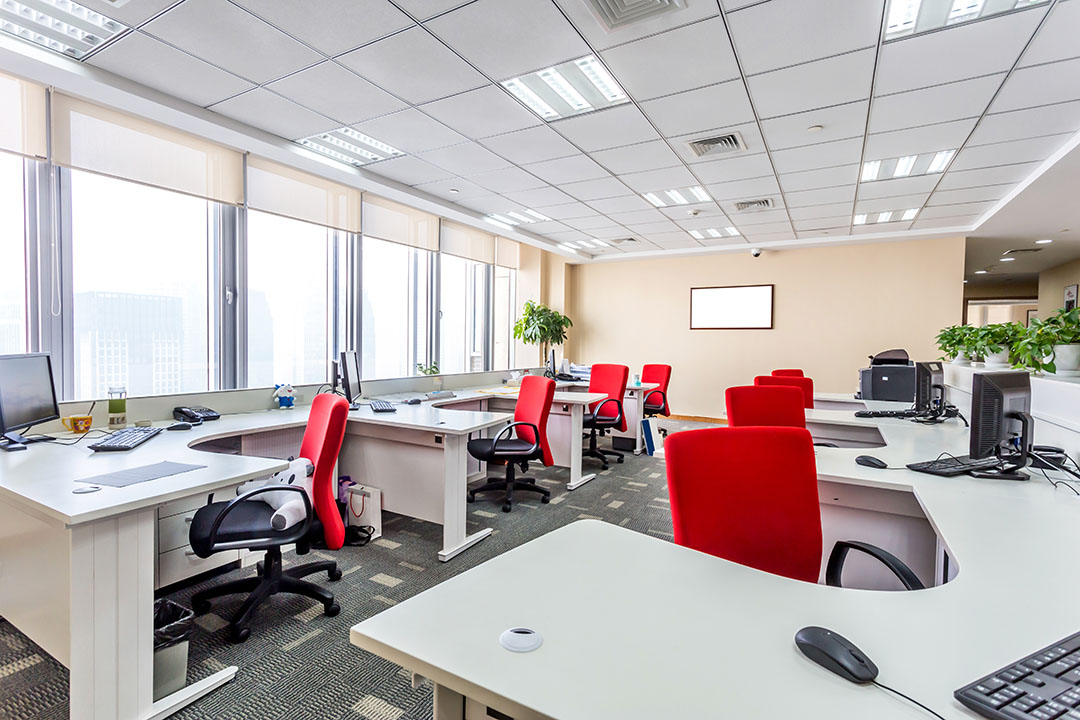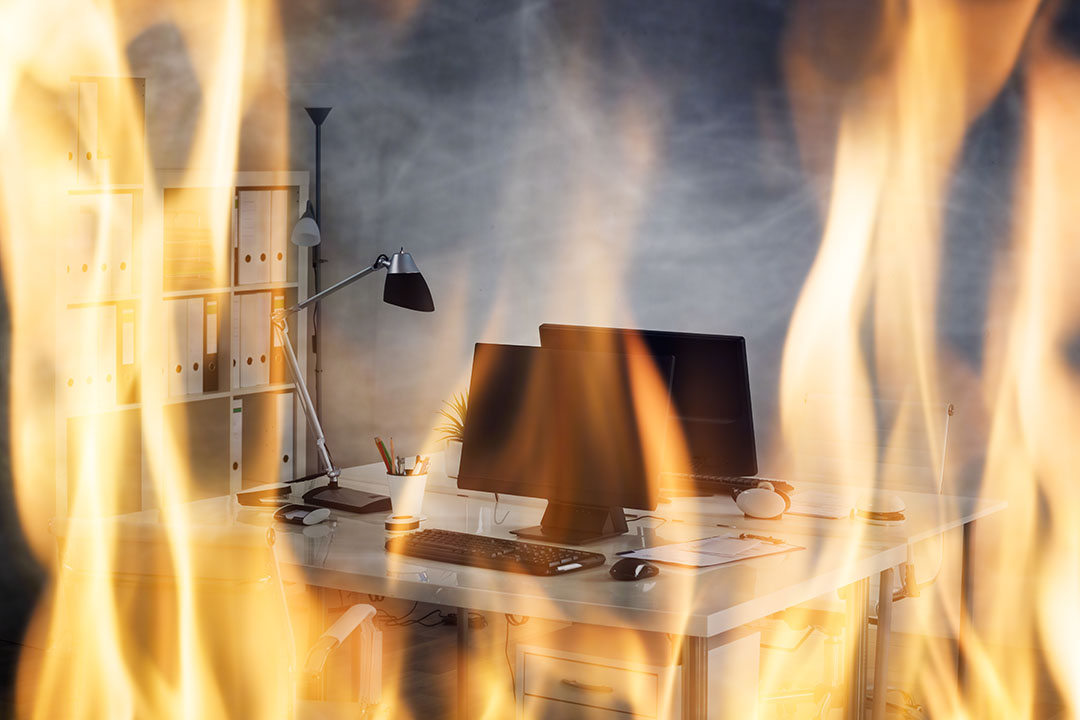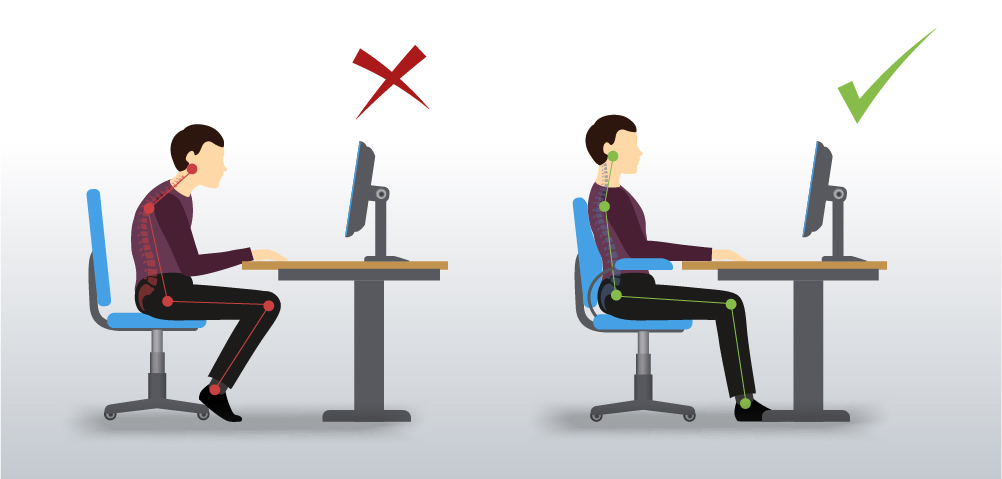
Office Environment
When evaluating your office for potential hazards, pay attention to the following:
- Ergonomics
- Layout
- Lighting
- Air quality
- Noise levels
- Storage
- Electrical equipment
Ergonomics
Take a moment to pause and consider how you’re sitting. Is your back straight? Are your shoulders hunched over? Can your feet reach the floor? Is your computer monitor or mobile device screen too close or too far away? These inconveniences may seem small on a day-to-day basis, but if you sit hunched over or strain to see your monitor every day for ten years, you could cause serious damage to your body. This can lead to pain, numbness, tingling and even musculoskeletal disorders, or MSDs. MSDs include carpal tunnel, leg numbness, and chronic pain in the neck, back or shoulders.
To avoid MSDs, you should train your employees to set up their workplaces to provide neutral body positioning. To achieve neutral body positioning, adjust your chair and desk so that you hands, wrists and forearms are straight and parallel to the floor. Then, keep your head level and balanced, your shoulders relaxed and your elbows close to your body. Your knees should be at the same height as your hips and should be parallel to the floor. Your feet should be fully supported by the floor or by a footrest.
Physical Layout
A poor office layout can distract employees, decrease productivity and morale, and put employees at risk for trips, falls, bumps and other injuries. Desks should be placed at least three feet apart, and office equipment like computers and printers shouldn’t be placed on the edge of desks. Employees shouldn’t sit beneath an uncovered vent that dumps hot or cold air on them. Filing cabinets should be closed when not in use, and cords should be neatly organized where they don’t present tripping hazards and aren’t rolled over by desk chairs.
Lighting
Too much lighting can cause glare on computer screens, which can cause eye fatigue and strain. Employees should never sit with their backs to a window. Too-bright offices can be made dimmer by removing one of the rods in overhead fluorescent lighting. Too-dark offices can be made brighter with task lamps.
Air Quality
Poor air quality, caused by construction elsewhere in the building, mold and mildew, or unpleasant odors, can cause respiratory illness, dizziness, and more. You should keep all common areas, especially kitchens, clean and free from spoiled food. If you suspect that your office has mold or mildew problems, you can call a professional to measure the mold levels in each room.
Noise Levels
High noise levels can trigger headaches or migraines and distract your employees from their work. This is particularly common in open office environments. To combat this, you can move desks farther apart, turn down the ringers on all phones, require employees to use headphones when listening to audio at their computers, and move noisy office machines away from desks.
Storage
When storing boxes of files, papers or other flammable materials, you should be sure to never store them near an ignition source, like a water heater. Stack the heaviest objects or boxes on the bottom and the lightest objects on top. Consider securing storage racks to the wall with a wall anchor so they don’t tip over, and never store objects in walkways where they could present a tripping hazard.
Electrical Equipment

Office Safety Summary
To avoid workplace injuries and illnesses, such as falls, musculoskeletal disorders, and electric shock, you should inspect your workplace for potential hazards. Pay particular attention to your office’s layout, lighting, air quality, noise levels and storage. Inspect all electrical equipment and power strips and train your employees over proper ergonomic practices.
For more information on office safety, see the following links:
- Safety + Health – Office Ergonomics
- Safety + Health – Recognizing Hidden Dangers: 25 Steps to a Safer Office
- SHRM – 5 Common Office Hazards to Prevent
SafetySkills covers these topics and more in our Office Safety course. For more information, click here.




